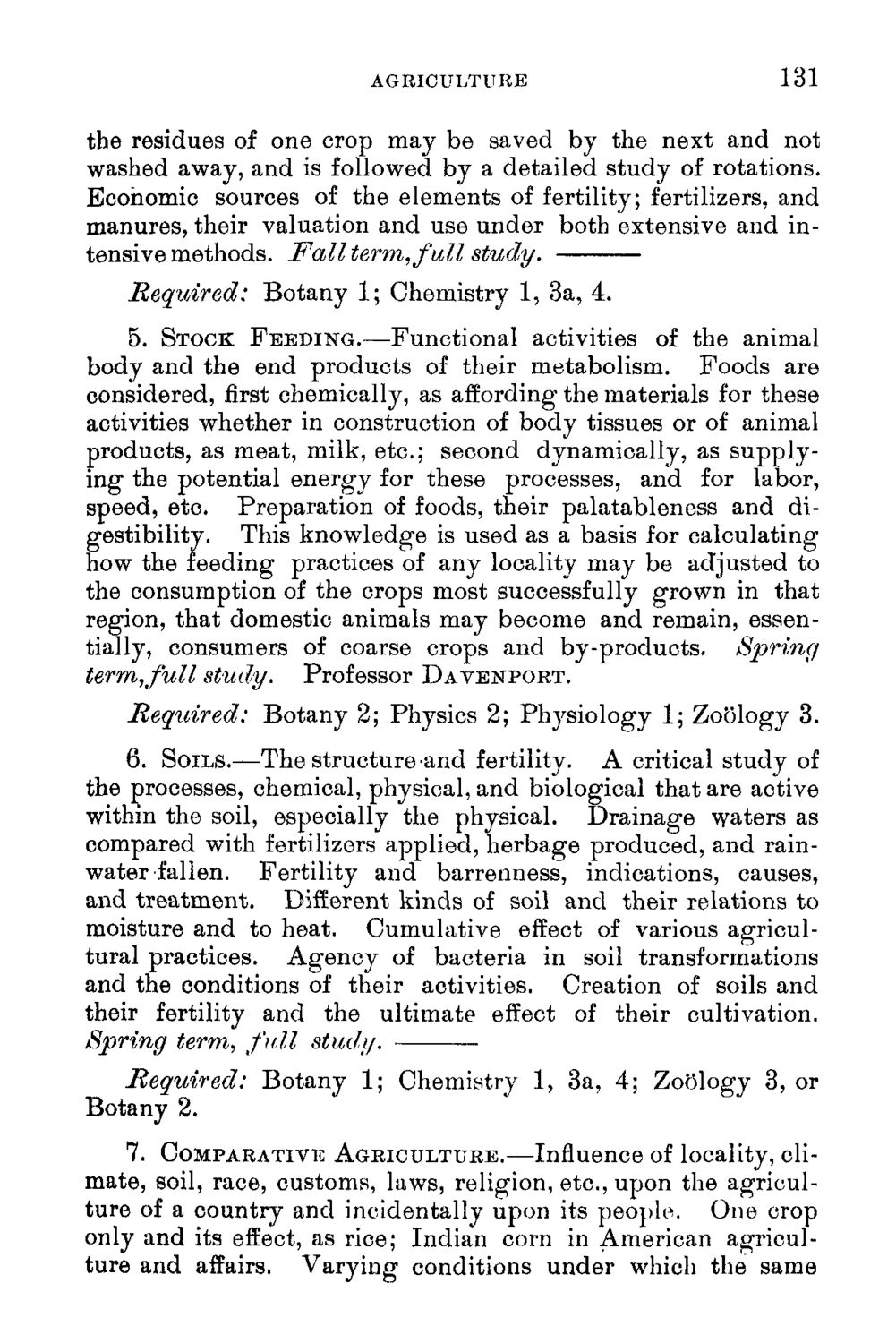| |
| |
Caption: Course Catalog - 1895-1896
This is a reduced-resolution page image for fast online browsing.

EXTRACTED TEXT FROM PAGE:
AGRICULTURE 131 the residues of one crop may be saved by the next and not washed away, and is followed by a detailed study of rotations. Economic sources of the elements of fertility; fertilizers, and manures, their valuation and use under both extensive and intensive methods. Fall term, full study. Required: Botany 1; Chemistry 1, 3a, 4. 5. STOCK FEEDING.—Functional activities of the animal body and the end products of their metabolism. Foods are considered, first chemically, as affording the materials for these activities whether in construction of body tissues or of animal products, as meat, milk, etc.; second dynamically, as supplying the potential energy for these processes, and for labor, speed, etc. Preparation of foods, their palatableness and digestibility. This knowledge is used as a basis for calculating how the feeding practices of any locality may be adjusted to the consumption of the crops most successfully grown in that region, that domestic animals may become and remain, essentially, consumers of coarse crops and by-products. Spring term,full study. Professor DAVENPORT. Required: Botany 2; Physics 2; Physiology 1; Zoology 3. 6. SOILS.—The structure and fertility. A critical study of the processes, chemical, physical, and biological that are active within the soil, especially the physical. Drainage waters as compared with fertilizers applied, herbage produced, and rainwater fallen. Fertility and barrenness, indications, causes, and treatment. Different kinds of soil and their relations to moisture and to heat. Cumulative effect of various agricultural practices. Agency of bacteria in soil transformations and the conditions of their activities. Creation of soils and their fertility and the ultimate effect of their cultivation. Spring term, full study. Required: Botany 1; Chemistry 1, 3a, 4; Zoc3logy 3, or Botany 2. 7. COMPARATIVE AGRICULTURE.—Influence of locality, cli- mate, soil, race, customs, laws, religion, etc., upon the agriculture of a country and incidentally upon its people. One crop only and its effect, as rice; Indian corn in American agriculture and affairs, Varying conditions under which the same
| |